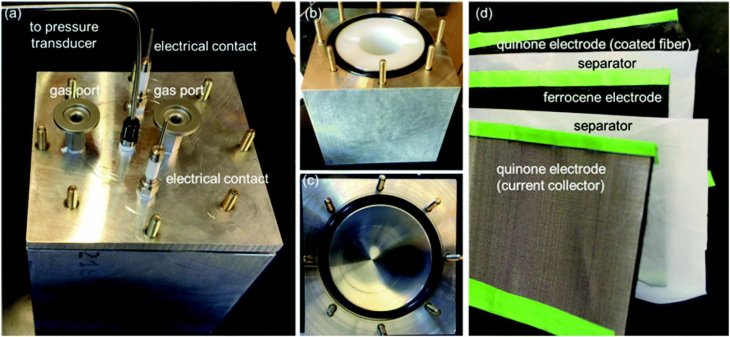MIT Experts Found A Cost-Effective Way To Remove Carbon Dioxide From The Air
Aadhya Khatri - Dec 03, 2019

This method is cost-effective and it works on different levels of carbon dioxide concentrations, in both factories and the air
- Going Vegetarian Could Eliminate 16 Years Of CO2 Emissions By 2050
- CO2 Can Be Turned Into Sustainable Fuel, Giving Hope To Polluted Delhi
- These Living Bricks Can Self-Heal, Absorb CO2, And Multiply
Removing carbon dioxide from the air is arguably the most effective way to lessen the effect of climate change. And experts from MIT have just found a less costly way to do so.
The new device works much like a battery, which absorbs CO2 from the air passing through its electrodes. Since the size can be adjusted as needed, this device can be an emission absorber for all purposes.

Another advantage of this technology is that it works on different levels of CO2 concentrations. So it can be as handy at factories where the levels of carbon dioxide are high, as in other areas with a lower concentration.
Before this device, other technologies use amine solutions to remove the CO2. However, we have to heat the solution to be able to reuse amine and release carbon dioxide. This process requires lots of energy and cannot work for a low concentration. Other methods using filters also require heat so that the filters can be used again.
The only energy MIT’s device needs is electricity so that we can power it with renewables. The main parts of the device are two thin sheets of electrodes with coating from two different compounds. When the electrodes are charged, a chemical reaction between polyanthraquinone, one of the two compounds, and carbon dioxide and the gas will be integrated into the sheet of the electrode. When the device is discharged, the gas will be released, and the process can happen all over again.
What the experts plan to do is to blow flue gas through the new device and to clean it of CO2. Next, after discharging, the carbon dioxide can be turned into fuels or stored underground.
This method requires only one-tenth of the energy needed by the existing ones.
Featured Stories

Features - Jul 01, 2025
What Are The Fastest Passenger Vehicles Ever Created?

Features - Jun 25, 2025
Japan Hydrogen Breakthrough: Scientists Crack the Clean Energy Code with...

ICT News - Jun 25, 2025
AI Intimidation Tactics: CEOs Turn Flawed Technology Into Employee Fear Machine

Review - Jun 25, 2025
Windows 11 Problems: Is Microsoft's "Best" OS Actually Getting Worse?

Features - Jun 22, 2025
Telegram Founder Pavel Durov Plans to Split $14 Billion Fortune Among 106 Children

ICT News - Jun 22, 2025
Neuralink Telepathy Chip Enables Quadriplegic Rob Greiner to Control Games with...

Features - Jun 21, 2025
This Over $100 Bottle Has Nothing But Fresh Air Inside

Features - Jun 18, 2025
Best Mobile VPN Apps for Gaming 2025: Complete Guide

Features - Jun 18, 2025
A Math Formula Tells Us How Long Everything Will Live

Features - Jun 16, 2025
Comments
Sort by Newest | Popular